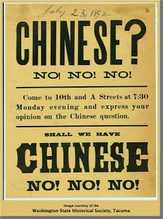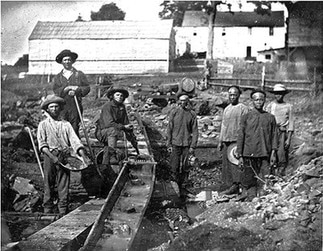Image Above: "The Chinese Must Go!, trade card from the Missouri Steam Washer Company of St. Louis, Missouri, 1883." Courtesy of Kadist Art Foundation.
|
"All persons born or naturalized in the United States, and subject to the jurisdiction thereof, are citizens of the United States and of the state wherein they reside. No state shall make or enforce any law which shall abridge the privileges or immunities of citizens of the United States; nor shall any state deprive any person of life, liberty, or property, without due process of law; nor deny to any person within its jurisdiction the equal protection of the laws."- U.S. Constitution, 14th Amendment, Section 1
These words should have protected Mississippi-born Martha and Berda Lum from discrimination. However, in the time of the Jim Crow South, communities often denied non-whites the right to attend local schools.
"Segregation plans are not predicated upon the assumption that any races are either superior or inferior, but upon their irreconcilable differences, making them as impracticable of mixture as oil and water...Segregation serves to avoid these difficulties, benefiting all alike." from Race Segregation, Los Angeles Times, 1927.


